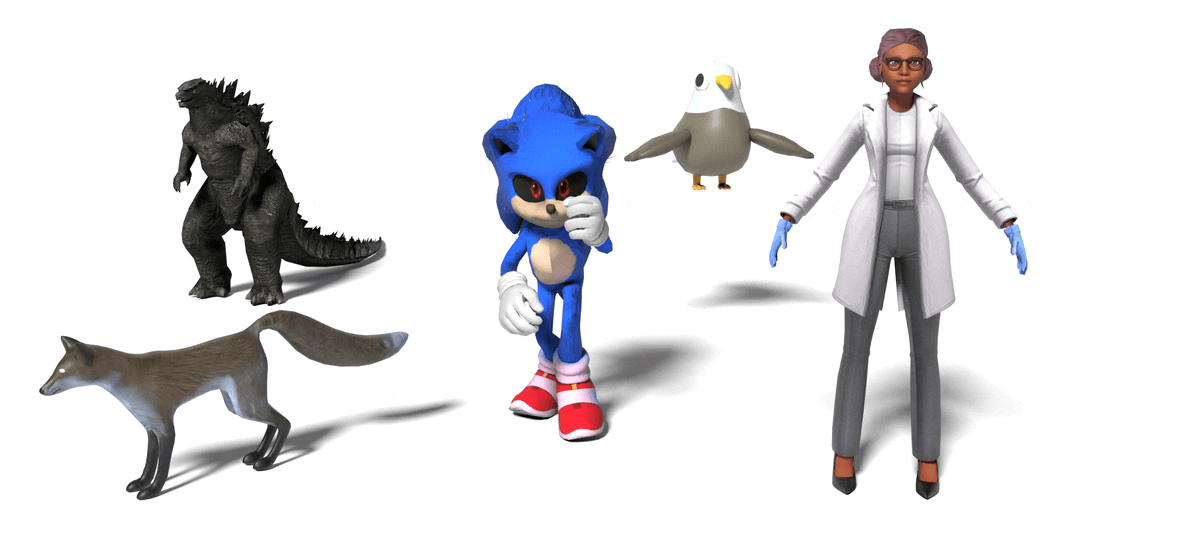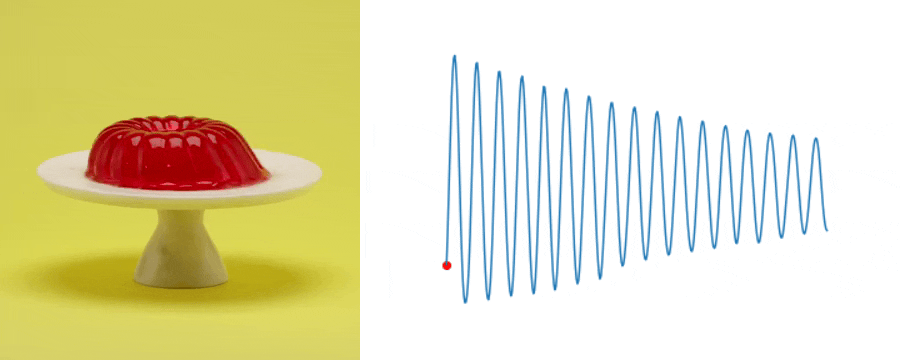|
Hi👋! I'm a CS Ph.D. student at Stanford, fortunate to be advised by Prof. Jiajun Wu. My research lies at the intersection of 4D Computer Vision, Graphics, and Machine Learning. I'm broadly interested in data-driven modeling of the physical world and applications of such models. Specifically, I'm currently obsessed with developing neural-symbolic graphics engines for the (inverse) modeling of macroscopic mechanical systems. My research is in part supported by an NVIDIA Graduate Fellowship.
Email: X × Y, where X = {gengchen}, Y = {@cs.stanford.edu}
Google Scholar / Twitter / GitHub / LinkedIn |

|
|
|
|
|
For the comprehensive list, check out my Google Scholar page.

|
Yufan Deng^*, Yuhao Zhang^*, Chen Geng, Shangzhe Wu†, Jiajun Wu† SIGGRAPH 2025 [Paper] [Project Page] [Demo] [Code] [arXiv] tl;dr: We propose a dataset and benchmark for supervised-learning-based 4D object rigging methods. |

|
Guangzhao He^*, Chen Geng*, Shangzhe Wu, Jiajun Wu CVPR 2025 [Paper] [Project Page] [arXiv] tl;dr: We discover animatable motion subspaces for any 4D objects. |
|
Chen Geng, Yunzhi Zhang, Shangzhe Wu, Jiajun Wu CVPR 2025 (Oral Presentation, 3.3% of the accepted papers) [Paper] [Project Page] [Code (Coming Soon)] [arXiv] tl;dr: We generate temporal 4D object intrinsics from 2D foundation models. |
|
|
Zhen Xu, Sida Peng, Chen Geng, Linzhan Mou, Zihan Yan, Jiaming Sun, Hujun Bao, Xiaowei Zhou CVPR 2024 (Highlight, 11.9% of the accepted papers) [Paper] [Project Page] [Code] [arXiv] [Video] tl;dr: We estimate physically based intrinsics of dynamic characters from monocular videos. |
|

|
Chen Geng*, Hong-Xing "Koven" Yu*, Sida Peng, Xiaowei Zhou, Jiajun Wu ICLR 2024 [Paper] [Project Page] [Code (Coming Soon)] [OpenReview] tl;dr: We discover a low-dimensional interpretable motion representation for dynamic scenes with macro motion. |
|
Chen Geng*, Hong-Xing "Koven" Yu*, Sharon Zhang, Maneesh Agrawala, Jiajun Wu ICCV 2023 [Paper] [Project Page] [Video] [Code] [MarkTechPost] tl;dr: We decompose the shading of objects into a tree-structured representation, which can be edited or interpreted by users easily. |
|
|
Chen Geng*, Sida Peng*, Zhen Xu*, Hujun Bao, Xiaowei Zhou CVPR 2023 [Paper] [Project Page] [Code] tl;dr: We accelerate the learning of neural volumetric videos of dynamic humans by over 100 times.
|
|
|
Sida Peng, Chen Geng, Yuanqing Zhang, Yinghao Xu, Qianqian Wang, Qing Shuai, Xiaowei Zhou, Hujun Bao TPAMI 2023 [Paper] [Code] [IEEE Xplore] tl;dr: Our approach reconstruct geometry and appearance of human performers with high accuracy from sparse observations.
|
|
|
Qing Shuai, Chen Geng, Qi Fang, Sida Peng, Wenhao Shen, Xiaowei Zhou, Hujun Bao SIGGRAPH 2022 (Featured in the technical paper trailer) [Paper] [Bibtex] [Code] [Project Page] tl;dr: Given sparse multi-view videos of crowded scenes with multiple human performers, our approach is able to generate high-fidelity novel views and accurate instance masks.
|
|
|
 |
Stanford University
2023 - Present, Stanford, California PhD Candidate in Computer Science Advisor: Prof. Jiajun Wu |
 |
Zhejiang University
2019 - 2023, Hangzhou, China B.Eng.(Honours) in Computer Science Cumulative GPA: 94.38/100, 3.99/4.0 Major GPA: 96.67/100, 4.0/4.0 Advisor: Prof. Xiaowei Zhou |
|
|
 |
Conference Reviewer: CVPR (2024-), ECCV (2024-), ICCV (2025-), SIGGRAPH (2025), SIGGRAPH Asia (2024, 2025), ICML (2024-), ICLR (2025-), NeurIPS (2024-), NeurIPS Workshop Proposals (2025-), NeurIPS D&B (2024), ICRA (2024), 3DV (2023), AAAI (2024), Pacific Graphics (2024).
Journal Reviewer: IEEE Transactions on Pattern Analysis and Machine Intelligence (T-PAMI), IEEE Transactions on Visualization and Computer Graphics (TVCG). Co-organizer: Stanford GCafé (Graphics Lunch Seminar) 2024, 3DV 2025, ICCV 2025 Workshop on Generating Digital Twins from Images and Videos. Mentorship and Outreach: Stanford PhD Application Support Program for Underrepresented Group (SASP) 2023, Stanford CS Undergraduate Mentoring Program 2023. Misc.: Finalist, Qualcomm Innovation Fellowship, 2024. |
|
This website is adapted from this awesome template
|